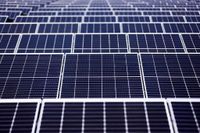In a significant move toward a cleaner, more sustainable energy future, the Philippines recently concluded its fourth green energy auction (GEA-4), drawing major industry players but falling just short of its ambitious installation target. The Department of Energy (DOE) announced that the auction, held on September 3-4, 2025, garnered 111 accepted bids amounting to 9,423.622 megawatts (MW) of renewable energy capacity—about 88 percent of the 10,653 MW goal.
Despite not hitting the full target, the DOE was quick to highlight the strong interest from both established and emerging developers. Leading the charge were some of the country’s most prominent conglomerates: San Miguel Global Power Holdings Corp., Ayala-led ACEN Corp., Aboitiz Power Corp., and Lopez-led First Gen Corp. Other notable participants included Alternergy Holdings Corp., Citicore Renewable Energy Corp., Basic Energy Corp., NexGen Energy Corp., and PetroEnergy Resources Corp., according to the Philippine Daily Inquirer and BusinessWorld.
The GEA-4 covered a diverse range of renewable technologies, including ground-mounted and roof-mounted solar, floating solar, onshore wind, and integrated renewable energy with energy storage systems (IRESS). These technologies are seen as pivotal for the country’s energy transition, but not all installation targets were met. Floating solar, onshore wind, and IRESS, in particular, saw unsubscribed capacity—a gap that the DOE plans to address by offering these slots to other qualified bidders who submitted accepted proposals.
Energy Secretary Sharon Garin expressed optimism about the country’s renewable energy trajectory, stating, “The results of GEA-4 affirm the strong partnership between government and the private sector in driving renewable energy deployment.” She added, “By securing over 9,000 MW of new clean energy commitments, and by offering unsubscribed installation targets to other eligible bidders, we are ensuring that our transition is ambitious, inclusive, and resilient.”
The green energy auction program is a flagship initiative designed to ramp up the share of renewables in the Philippines’ power generation mix. The current administration has set a target to boost renewable energy’s portion from 22 percent to 35 percent by 2030. The latest auction is a step in that direction, though the journey is far from over.
According to BusinessWorld, the DOE received more than 200 bids from 142 companies for the GEA-4 round, reflecting a competitive and dynamic market. However, only 111 bids were accepted, and winning developers are now required to submit post-auction documentation, such as affidavits of undertaking, performance bonds, and system impact studies. The commercial operations of these projects are expected to commence between 2026 and 2029, and each project will be governed by a 20-year supply contract starting from its operational date.
There’s a reason for the slightly lower turnout in certain technology segments. Ma. Theresa Cruz-Capellan, chairman of the Philippine Solar and Storage Energy Alliance, noted that the 88 percent subscription rate is commendable given the auction’s focus on emerging technologies like IRESS and floating solar. “Let us be reminded that the auction, as conceived, is directed towards emerging technologies,” Cruz-Capellan told BusinessWorld. She explained that technical standards for these two technologies are still evolving, increasing financial risks and making project bankability more challenging.
IRESS, for instance, allows renewable plants to store excess energy for use during periods of high demand or low generation, while floating solar involves installing solar panels on water bodies—a promising but technically complex solution. The lack of finalized standards for these sectors has made some investors cautious, but Cruz-Capellan credited ongoing consultations and information sharing for helping to attract a solid pool of bidders.
Industry observers see the auction as a learning process. Angelo Kairos Dela Cruz, executive director of the Institute for Climate and Sustainable Cities, remarked, “The recent auctions conducted by the government show why the Philippines is the second-most attractive emerging economy for renewable energy investments worldwide.” He praised the DOE’s willingness to adapt and improve its policies based on previous rounds, noting, “What’s really good with the DOE is that you can see how the policies are flexible enough to learn from the mistakes and from the gaps. I think this humility, at some point, allows the DOE to come up with better policies without losing its credibility as a very strong institution here in the Philippines.”
The GEA program began in 2022, and with each round, the government has refined its approach. All rounds combined promise a total renewable energy capacity of 20 gigawatts, a testament to the country’s bold ambitions. Looking ahead, the upcoming GEA-5 round, dedicated to offshore wind projects, is expected to offer an additional 3,300 MW of capacity within the year, further expanding the nation’s renewable portfolio.
The DOE underscored the importance of maximizing every opportunity for renewable energy development. “This mechanism ensures that unsubscribed installation targets are maximized under GEA-4, and no opportunity for RE development is left unutilized,” the agency stated. By offering unsubscribed slots to other qualified bidders, the government aims to keep the momentum going and avoid any wasted potential.
For the private sector, the stakes are high but so are the rewards. The 20-year supply contracts provide a stable revenue stream, and the government’s commitment to transparent, competitive selection has made the Philippines a magnet for both local and international investors. The collaboration between the DOE and private developers is widely seen as a model for public-private partnership in the region.
It’s not all smooth sailing, though. The path to a greener grid involves overcoming technical, regulatory, and financial hurdles, especially for newer technologies. Yet, the consensus among stakeholders is that the country is moving in the right direction. As the DOE put it, “Through bold targets, innovative policy tools like the Green Energy Auction, and active collaboration with the private sector, the country continues to pave the way toward a resilient and climate-centered power system that benefits all Filipinos.”
As the Philippines pushes forward with its renewable energy ambitions, the lessons learned from GEA-4 will likely serve as a blueprint for future auctions. The journey to a 35 percent renewable share by 2030 is far from over, but the latest auction shows that, with determination and cooperation, the country is well on its way to a cleaner, more sustainable future.




